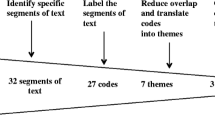Abstract
The term risk is defined as the potential future harm that may arise due to some present actions. Risk management in software engineering is related to the various future harms that could be possible on the software due to some minor or non-noticeable mistakes in software development project or process. There are quite different types of risk analysis that can be used. Basically, risk analysis identifies the high risk elements of a project in software engineering. Also, it provides ways of detailing the impact of risk mitigation strategies. Risk analysis has also been found to be most important in the software design phase to evaluate criticality of the system. The main purpose of risk analysis understands the risks in better ways and to verify and correct the attributes. A successful risk analysis includes important elements like problem definition, problem formulation, data collection. Some of the requirement risks are Poor definition of requirements, Inadequate of requirements, Lack of testing, poor definition of requirements etc. The likelihood of the events which tends to the goal can be evaluated from the evidence of Satisfaction and denial of the goal and it can be achieved through Tropos goal model. Original Tropos model is modified to meet the risk assessment requirements in requirements engineering. The event considers as a risk which based on the likelihood values. The relations are defined between multiple goals and events, which identify the necessity of a particular goal. In order to analyze the risk in achieving some particular goals, a set of candidate solutions are generated. Based on the risk affinitive value, the candidate solutions can be evaluated. There are three risk parameters to compute the risk affinitive value, which are (1) low (2) medium (3) high. The risk parameters and cost analysis clearly evaluate the affinity of that event to a particular set of goals.











Similar content being viewed by others
References
Li, S., Duo, S.: Safety analysis of software requirements: model and process. Rev. Procedia Eng. 80, 153–164 (2014)
Appukkutty, K., Ammar, H., Goseva Popstajanova, K.: Software requirement risk assessment using UML. In: IEEE, pp. 1–4 (2005)
Asnar, Y., Giorgini, P.: Risk analysis as part of the requirements engineering process. Dit. Rev. 14, 1–23 (2007)
Bresciani, P., Perini, A., Giorgini, P., Giunchiglia, F., Mylopoulos, J.: Tropos: an agent-oriented software development methodology. J. Auton. Agents Multi-Agent Syst. 8(3), 203–236 (2004)
Anton, A.I.: Goal-based requirements analysis. In: Proceedings of the 2nd IEEE International Conference on Requirements Engineering (ICRE’96), p. 136. IEEE Computer Society Press, Washington, DC (1996)
Yu, E.: Modelling strategic relationships for process engineering. PhD thesis, University of Toronto, Department of Computer Science (1995)
Giorgini, P.:. Agent-Oriented Software Engineering Course, pp. 1–32. University of Trento, Trento (2010)
Venkatesh Sharma, K., Kumar, P.V.: A method to risk analysis in requirement engineering through optimized goal selection Tropos goal layer. J. Theor. Appl. Inf. Technol. Rev. 61(2), 270–280 (2014)
Muñante, D., Chiprianov, V., Gallon, L., Aniorte, P.: A review of security requirements engineering methods with respect to risk analysis and model-driven engineering. In: International Conference on Availability, Reliability, and Security, pp. 1–16 (2016)
Gupta, D., Sadiq, M.: Software risk assessment and estimation model. In: International Conference on Computer Science and Information Technology, pp. 963–967 (2008)
Venkatesh Sharma, K., Kumar, P.V.: A method to risk analysis in requirement engineering using Tropos goal model with optimized candidate solutions. Int. J. Comput. Sci. Rev. 10(6), 250–259 (2013)
Islam, S., Hilde Houmb, S.: Integrating risk management activities into requirements engineering. In: IEEE, pp. 1–12 (2010)
Christiansen, T., Wuttidittachotti, P., Prakancharoen, S., Arjong Vallipakorn, S.: Prediction of risk factors of software development project by using multiple logistic regression. ARPN J. Eng. Appl. Sci. 10(3), 1324–1331 (2015)
Huzooree, G., Devi Ramdoo, V.: A systematic study on requirement engineering processes and practices in mauritius. Int. J. Adv. Res. Comput. Sci. Softw. Eng. 5(2), 40–46 (2015)
Sarigiannidis, L., Chatzoglou, P.D.: Software development project risk management: a new conceptual framework. J. Softw. Eng. Appl. 4, 293–305 (2011)
Eduardo, L., Martins, G., Gorschek, T.: Requirements engineering for safety-critical systems. In: IEEE Software, pp. 49–57 (2017)
Sharma, V.K., Kumar, P.V.: An efficient risk analysis based risk priority in requirement engineering using modified goal risk model. Int. J. Comput. Appl. 73(14), 15–25 (2013)
Asnar, Y., Giorgini, P., Mylopoulos, J.: Goal-driven risk assessment in requirements engineering. Requir. Eng. 16, 101–116 (2011)
Sharma, V.K., Kumar, V.P.: An efficient risk analysis in requirement engineering. In: IEEE, pp. 1–5 (2012)
Bhukya, S.N., Pabboju, S.: An effective risk analysis in requirements engineering using modified goal model. Int. J. Pure Appl. Math. 118(18), 1401–1418 (2018)
Author information
Authors and Affiliations
Corresponding author
Rights and permissions
About this article
Cite this article
Bhukya, S.N., Pabboju, S. Software engineering: risk features in requirement engineering. Cluster Comput 22 (Suppl 6), 14789–14801 (2019). https://doi.org/10.1007/s10586-018-2417-3
Received:
Revised:
Accepted:
Published:
Issue Date:
DOI: https://doi.org/10.1007/s10586-018-2417-3




